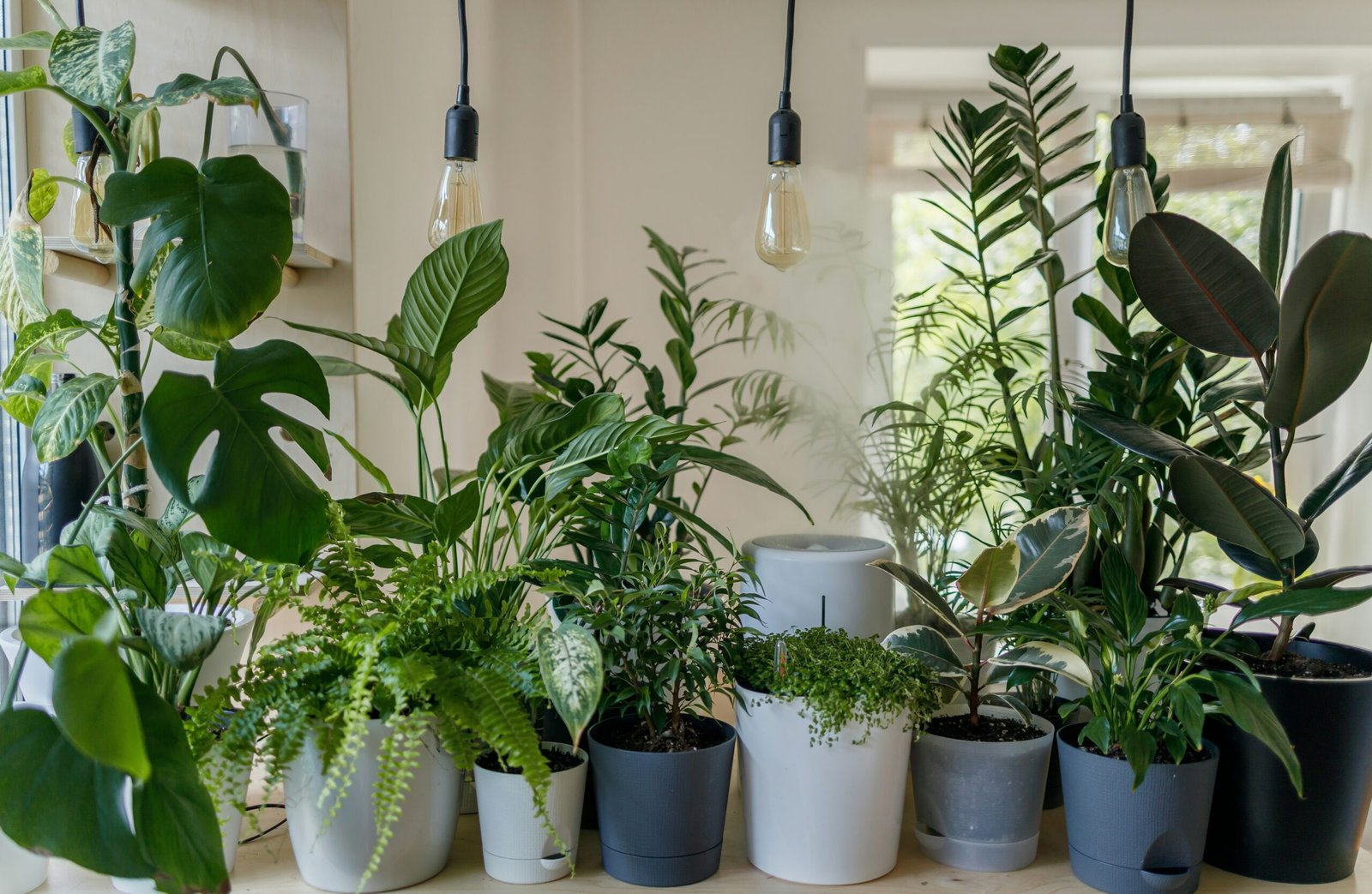Search Below For New Gardening Tips and Tricks with Practicals
Table of Contents
Are Leaf Bugs Good for Flower Gardens?
Introduction to Leaf Bugs
Leaf bugs, scientifically classified in the order Hemiptera, specifically under the family Miridae, are common insects that often go unnoticed due to their remarkable camouflage abilities. These fascinating creatures are primarily green or brown, allowing them to blend seamlessly into their surrounding foliage. Their body structure is flat, with a broad, leaf-like appearance that enables effective mimicry of leaves and twigs, which can deter potential predators. Leaf bugs are generally small, ranging from 5 to 30 millimeters in length, and exhibit distinctive features like long antennae and slender legs.
These insects inhabit a variety of environments, including gardens, forests, and meadows where flowering plants abound. They are most commonly found on the undersides of leaves, which provide both nourishment and protection. Leaf bugs typically have a plant-based diet, feeding on the sap of various plants. Their feeding habits can influence the health and vitality of plants, particularly flowering species in gardens, which leads to an important question: are leaf bugs good for flower gardens? The answer largely depends on their population density and the specific plants they target.
The lifecycle of leaf bugs includes several stages, starting from the egg phase, proceeding to nymphs, and eventually reaching adulthood. These insects usually produce a significant number of eggs, with the potential for population surges that may affect local flora. While engaging with flowering plants, leaf bugs utilize their piercing mouthparts to extract sap, which can weaken plants if not managed. However, their presence is not solely negative, as they are known to predate on certain pest species, thus maintaining a natural balance within the ecosystem of garden environments.

Benefits of Leaf Bugs in Flower Gardens
Leaf bugs, often perceived as mere nuisances, play a significant role in promoting the health and vitality of flower gardens. Understanding whether leaf bugs are good for flower gardens involves recognizing their contributions to pest control, pollination, and overall ecosystem balance.
One of the primary benefits of leaf bugs is their contribution to pest control. These insects can help manage populations of various harmful pests that would otherwise threaten the flowers. By feeding on aphids and other small insects, leaf bugs help to naturally regulate these pests, reducing the need for chemical pesticides. This natural form of pest management is not only effective but also aligns with sustainable gardening practices, making gardens healthier for both plants and wildlife.
Moreover, leaf bugs play a vital role in pollination. Though they may not be as well-known as bees or butterflies, many species of leaf bugs inadvertently assist in the process of pollination while moving from flower to flower. By transferring pollen, they contribute to the reproductive success of flowering plants, ensuring vibrant blooms and abundant seeds. This makes them an essential component of the gardening ecosystem, particularly in diverse flower gardens where pollination is crucial.
Finally, leaf bugs enhance overall ecosystem health within flower gardens. Their presence signifies a balanced environment where various species coexist. By supporting a diverse range of organisms, leaf bugs contribute to soil health and water retention, promoting a sustainable habitat for all garden inhabitants. Thus, rather than viewing them as adversaries, recognizing the multifaceted benefits of leaf bugs can greatly influence how garden enthusiasts approach their management. Considering their positive role in maintaining a balanced garden environment can help in appreciating the question, “Are leaf bugs good for flower gardens?”
Potential Risks Associated with Leaf Bugs
While leaf bugs can offer certain benefits in flower gardens, such as their role in the ecosystem, their presence may also pose significant risks. One primary concern is the potential for plant damage. Leaf bugs, particularly in high populations, can feed on the sap of various plants, leading to wilting, yellowing leaves, and stunted growth. This feeding behavior can stress plants and make them more susceptible to diseases, compromising their overall health and aesthetic appeal.
In addition to plant damage, leaf bugs can exhibit pest behaviors that disrupt the delicate balance of your garden. Some species may emit a pungent odor when they feel threatened, which can discourage pollinators from visiting nearby flowers. This disturbance can have a cascading effect on the flower garden’s productivity, as fewer pollinators may result in reduced seed and fruit set. Moreover, certain species of leaf bugs are known to transmit plant pathogens, which can further exacerbate plant health issues.
Another aspect to consider is the competition leaf bugs create with other beneficial insects in the garden. While some insects contribute positively to the ecosystem through pollination or natural pest control, the presence of leaf bugs can alter this balance. They may outcompete beneficial species for resources such as food and space, ultimately disrupting the dynamics of an ecosystem that is supposed to be harmonious. Therefore, while leaf bugs may possess certain positive attributes, it is crucial to monitor their populations and manage their presence effectively to safeguard the health of flower gardens.
In conclusion, understanding the potential risks associated with leaf bugs is essential for gardeners looking to maintain a vibrant and flourishing flower garden. The impacts of their feeding habits, behavioral traits, and competitive nature must be addressed to ensure a healthy environment for both plants and beneficial insects.
Identifying Leaf Bugs: Look-Alikes and Differences
Understanding the various species within the insect realm is crucial for any gardener, particularly when distinguishing leaf bugs from their look-alikes. Leaf bugs, belonging to the family Phyllomycidae, often fade into the backdrop of foliage thanks to their remarkable mimicry. They closely resemble other insects, making accurate identification essential for garden health. While many insects may share superficial features with leaf bugs, recognizing distinct characteristics can enhance one’s ability to determine their role in flower gardens.
Leaf bugs typically exhibit flattened, green bodies adorned with intricate, leaf-like veining, aiding in their camouflage. Their antennae are usually long and slender, extending well beyond their eyes. Furthermore, the presence of a distinctive “leafy” texture is a crucial identifier, often mimicking actual leaves. On the other hand, look-alikes, such as some species of plant bug and lace bug, may display similar colors but commonly lack the unique body shape and texture of true leaf bugs. The key differences lay not only in physical traits but also in behavior; whereas leaf bugs tend to be more sedentary and blend within plant foliage, their mimics may exhibit more erratic movement.
Another vital identifying feature is the mouthparts. Genuine leaf bugs possess specialized mouthparts designed for piercing and sucking, letting them feed on plant sap without doing significant damage. In contrast, look-alike species might appear more aggressive and possess mouthparts designed for chewing, potentially harming plants in more direct ways. A critical observation during garden monitoring can help determine which insects are present, thereby allowing garden enthusiasts to ascertain whether leaf bugs are indeed beneficial allies or potential threats to their flower gardens.
Integrating Leaf Bugs into Your Garden Strategy
Incorporating leaf bugs into your garden strategy requires a balanced approach, as these insects can have both beneficial and detrimental impacts on flower gardens. Understanding their role and actively managing their populations can lead to a healthier gardening environment. Firstly, it is essential to recognize that not all leaf bugs are harmful; some act as natural predators, feeding on harmful pests that threaten flower health. Therefore, encouraging the presence of beneficial leaf bug populations can enhance the resilience of your garden.
One of the most effective ways to attract beneficial leaf bugs is through companion planting. By strategically selecting plants that are known to attract these insects, gardeners can create a welcoming atmosphere for leaf bugs. For instance, planting flowers such as marigolds or daisies can draw in beneficial species, allowing them to thrive while simultaneously managing pest populations. Furthermore, ensuring a diverse range of plant life can provide essential nutrients and habitats for these insects, further encouraging their presence in your flower gardens.
In addition to companion planting, creating habitats conducive to leaf bugs is crucial. This can be achieved by incorporating mulch, stones, or other natural materials that provide shelter. Maintaining areas of undisturbed soil can promote favorable living conditions for leaf bugs. Also, planting a variety of flowering plants that bloom at different times throughout the season can offer a continuous food source, encouraging leaf bugs to remain in your garden over time.
While integrating leaf bugs into your garden strategy, it is also vital to monitor their populations. Regularly inspecting your plants for signs of damage or pest presence can help you identify whether leaf bugs are becoming problematic. By maintaining a mindful approach, gardeners can foster a healthy balance of beneficial insects while minimizing the risks associated with less desirable leaf bug species.
Natural Predators of Leaf Bugs
Leaf bugs, known for their distinct appearance and behavior, can pose a significant challenge in flower gardens. However, they also attract various natural predators that play a critical role in controlling their populations and ensuring a balanced ecosystem. Understanding these predators is essential for gardeners aiming to maintain healthy flower gardens.
Among the most common natural predators of leaf bugs are certain species of ladybugs. These beneficial insects feed on various pests, including aphids and, to an extent, leaf bugs. Introducing ladybugs into your garden can provide a natural solution to mitigate the presence of leaf bugs, ensuring that flower gardens remain vibrant and healthy. Additionally, lacewings and their larvae are known to consume a wide range of garden pests, making them another useful ally in the battle against leaf bugs.
Birds also play an essential role in controlling leaf bug populations. Many bird species, including wrens and sparrows, feed on these pests. By providing a bird-friendly environment, such as adding birdhouses and feeders, gardeners can encourage these natural predators to visit their flower gardens, aiding in pest control.
The presence of predatory insects can not only help keep leaf bugs in check, but their activities also contribute to the overall health of the garden. For instance, predatory wasps, while sometimes overlooked, can deliver significant control of many pest species, including leaf bugs. By fostering an environment supportive of beneficial insects and birds, gardeners can create a robust ecosystem that limits the detrimental impact of leaf bugs while promoting plant health.
Therefore, leveraging the benefits of natural predators is vital for flower garden sustainability. In a well-balanced ecosystem, leaf bugs can coexist without causing damage, allowing for a diverse and thriving garden landscape.
Expert Opinions and Research Insights
Leaf bugs, also known as plant bugs, have been a subject of study among entomologists and horticulturists due to their ecological roles in flower gardens. These insects, which belong to various families, are often observed in proximity to flowering plants. Research has illustrated that certain species of leaf bugs can actually contribute positively to the ecosystem of a flower garden. Entomologist Dr. Susan Peel emphasizes that while some leaf bug species feed on plant sap, many also consume aphids and other pest insects. This positions them as beneficial predators, promoting a balanced garden ecosystem.
Furthermore, studies conducted by horticulturists have highlighted that leaf bugs can play a role in pollination. Although not as effective as bees, some leaf bug species visit flowers in search of nectar, inadvertently transferring pollen between plants. This behavior may enhance the overall health and productivity of flowering plants. According to a research article published in the Journal of Entomological Science, the presence of leaf bugs can lead to improved fruit set in certain flower varieties, suggesting that they are good for flower gardens by fostering biological diversity.
However, it is essential to differentiate between beneficial and harmful leaf bug species. Some may cause damage to plants by piercing foliage and extracting sap, which can lead to wilting or decline. Therefore, understanding the specific species present in a garden is crucial for gardeners looking to assess whether these insects are friends or foes. As horticultural expert Dr. Milton Wright remarks, “Monitoring leaf bug populations and identifying their species is the key to managing their presence effectively.” This nuanced understanding of leaf bugs’ roles underscores the importance of ongoing research to fully appreciate their contribution to flower gardens.
Case Studies: Leaf Bugs in Action
Understanding the role of leaf bugs in flower gardens is best illustrated through real-life case studies that showcase their impact. Several gardeners have documented their experiences, leading to a deeper insight into whether these insects are good for flower gardens. One notable case involved a community garden in the Midwest, where a sudden influx of leaf bugs created concerns among the gardeners. Initially perceived as a threat, a thorough assessment revealed that these bugs were feeding on specific weeds rather than the flowering plants. Consequently, the growers adjusted their pest management strategies, allowing the beneficial aspects of leaf bugs to surface, such as their contribution to natural pest control.
In another instance, a flower farm in California experimented with an integrated pest management approach. By encouraging the presence of leaf bugs, the farmer noted a remarkable reduction in aphid populations, which are known to harm flower beds. This case underlined the symbiotic relationships that can exist between leaf bugs and floral ecosystems. By monitoring leaf bug populations, the farmer aimed to achieve a balanced ecosystem, demonstrating that, when properly managed, these bugs can certainly be good for flower gardens.
However, not all experiences have been positive. A gardener in the Pacific Northwest faced challenges with leaf bugs overpopulating and damaging his prized blooms. This case emphasizes the importance of proactive measures, such as introducing natural predators or utilizing targeted insecticides. Through careful observation and management, the gardener learned to regulate the leaf bug populations, emphasizing that balance is key in determining their role in flower gardens.
These case studies illustrate the dual nature of leaf bugs in flower gardens. They can either serve as allies in controlling harmful pests or become pests themselves if not managed appropriately. By reviewing these real-life scenarios, gardeners can glean valuable insights into fostering a thriving garden ecosystem.
Conclusion: Making Informed Decisions
In the intricate ecosystem of flower gardens, the presence of leaf bugs presents both potential benefits and risks. Recognizing the dual role these insects can play is essential for gardeners who aim to foster a thriving garden environment. On one hand, leaf bugs are known to contribute positively by serving as natural predators of certain pests that harm flowering plants. By helping to control these pests, they can minimize the need for chemical interventions, promoting a healthier and more sustainable gardening practice. Their role in pollination, although less significant than some insects, should not be overlooked, as these bugs may assist in transferring pollen during their activities around flowers.
However, there are also concerns associated with the presence of leaf bugs in flower gardens. Some species can become invasive, posing a threat to the health of the plants they inhabit. They may feed on the foliage, leading to unsightly damage and potentially weakening plants, making them more susceptible to diseases. Therefore, understanding whether leaf bugs are good for flower gardens involves a careful assessment of the species present. It’s crucial for gardeners to identify the specific types of leaf bugs in their area, as some might be beneficial, while others could pose significant risks.
The decision to welcome or manage these insects should be grounded in informed judgment. Gardeners should observe their flower gardens and assess the overall health of their plants regularly. By weighing the benefits of natural pest control against the potential detriment of leaf bug activities, a balanced approach can be achieved. Ultimately, the goal is to harmonize the roles of leaf bugs within a flower garden, ensuring these insects contribute positively to the ecosystem while mitigating any adverse impacts they may have.
- The Ultimate Guide to Gardening Apron Womens
- Backyard Landscape Ideas Las Vegas
- Hugelkultur Gardening: Transforming Your Garden with Raised Beds
- Mini Trellis for Potted Plants
- Minnesota Fall Planting Guide
Discover more from Gardening with Ecorganicas-Source for Organic Gardening Tips
Subscribe to get the latest posts sent to your email.








